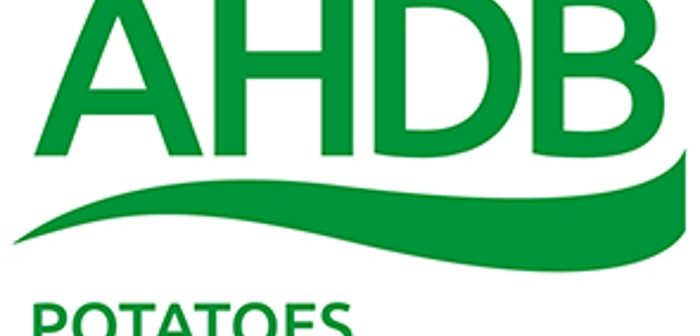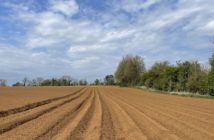Jeremy Oatey hosted this year’s Cornish Potato Day at his Hay Farm Dairy, Torpoint, as local growers, agronomists and other industry influencers met to see the latest research and developments from AHDB Potatoes.
Anne Stone, Knowledge Exchange Manager for AHDB Potatoes, said: “We have built this event based on the views of Cornish growers – so this is a good opportunity for us to reveal our findings, but also a great opportunity to discover new methods that growers can take and see what works best for them.”
Manipulating Tuber Number and Size
As the growing season approaches, the VCS Potatoes Agronomist, Graham Tomalin, was on hand to discuss the methods behind maximising yield.
Graham used his knowledge of potato physiology and its practical application to propose answers to specific challenges, such as how to achieve larger numbers of uniform sized salad potatoes, or greater tuber size in early bakers and King Edwards which are prominent across Devon and Cornwall.
Graham explained how tuber numbers and size can be manipulated dependant on variety: “During the trials we examined age, ethylene treatment and chitting regimes in order to produce large tubers of early chipping crops or numerous even sized-salads.
“For example, the temperature used when chitting for bakers is considerably higher early in the programme, than when chitting for punnet or salad crops.”
Graham provided a logical approach and plenty of detail by tackling a long list of aspects of the growing environment of the daughter crop including seed size, spatial arrangements and nutrition.
Graham explained that Maris Peer crops planted in May tend to produce fewer tubers than either earlier or later plantings, which can be explained by the relationship between temperature and light interception during tuber initiation.
The Plight of Blight
Dr Ruairidh Bain, one of the UK’s leading researchers on blight, is currently carrying out research on behalf of AHDB presented his research on blight control in South West Scotland, which is similar to Cornwall in its high humidity, although temperatures are lower.
Dr Bain’s presentation included a brief outline of the robust new “Hutton Criteria” which represents a step change in blight forecasting from the Smith periods.
Arising from research carried out at the James Hutton Institute and funded by AHDB Potatoes, the Hutton Criteria offer significant advances on the current forecasting model, the Smith Period, which was developed 60 years ago.
Although the Smith Period has been immensely valuable over that time, the need for an enhanced alerting system had been driven by changes in blight pathogen populations.
Discussing how these new criteria will be incorporated into the Blightwatch & Fight Against Blight tools, which is ready for growers to use this coming season, Anne Stone, said: “This advance has only been possible with support from blight scouts over many years. We will need more blight scouts in the future and everyone who can should sign up to get involved.
“We are also looking forward to a new FAB (Fight Against Blight) website, which will be launched in time for the new season.”
Emily Borton, South Region Agronomist for NIAB, said: “These events are a great opportunity for local industry specialists to get together and discuss the key issues on a regional level.
“They are also a good opportunity for growers and agronomists to raise awareness of specific issues relevant to their counties and climates with industry specialists and researchers”.
Matthew Siggs, Agronomist for Agrovista, said: “Concentrating on subjects that have an impact locally is a big advantage, to then sit in groups and discuss findings gives everyone an opportunity to give their opinion.
“Knowledge from these trials questions the way the industry has done things for years, so there are some differing views, which is quite refreshing to hear.”
The next AHDB Potatoes event in the area will be held at Dillington, Illminster on Wednesday 1 March.




